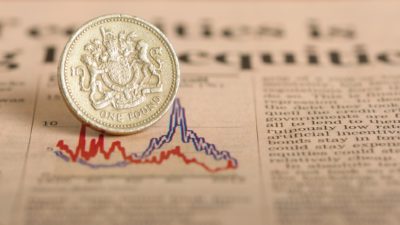Is a stock market fall good or bad? The answer depends on one’s own investment objectives. For many investors it can actually bring a golden opportunity to bring forward their retirement, in more ways than one. Below I detail why that is – and how I would put it into practice when the stock exchange takes a big tumble.
Retirement and a long-term investing perspective
First, I think it is helpful to understand why a stock market crash might not be a bad thing from the perspective of someone investing to help fund retirement.
A stock market fall does not mean the intrinsic value-creating ability of a company has changed. As an example, Diageo owns brands such as Guinness and Johnnie Walker. The customer appeal of such brands and Diageo’s ability to profit from it should be broadly similar whether the company’s share price moves up, down or sideways.
Passive income stocks: our picks
Do you like the idea of dividend income?
The prospect of investing in a company just once, then sitting back and watching as it potentially pays a dividend out over and over?
If you’re excited by the thought of regular passive income payments, as well as the potential for significant growth on your initial investment…
Then we think you’ll want to see this report inside Motley Fool Share Advisor — ‘5 Essential Stocks For Passive Income Seekers’.
What’s more, today we’re giving away one of these stock picks, absolutely free!
So, what has changed in a stock market fall? Just the price at which an investor can choose to buy or sell their shares. If one is not obliged to sell, a paper loss is just that. No money is actually lost unless the shares are sold. Meanwhile, an investor with a long-term timeframe – such as one planning for retirement – can take advantage of lower share prices to purchase stocks more cheaply than was previously possible.
How a stock market fall can help yield
A key way in which a stock market fall may allow me to retire early is by boosting the dividend yield I can get when buying shares.
That may not sound exciting – but it can have a potentially massive impact on the rate at which my investments compound, allowing me to hit retirement targets years in advance.
Take the asset manager M&G as an example. Currently its yield is 8.7%, which I already find very attractive. Imagine I invested £10,000 in the shares today. If I reinvested the dividends in more shares each time I received them, then after 20 years, I would own over £56,000 worth of M&G shares.
But in the stock market fall of March 2020, M&G shares traded for little more than half of their current price. If I had bought them then, I would now be earning an incredible 16.5% yield on my initial investment. That would allow me to reach the same value of holdings in 11 years as if I bought today and held for 20 years. If that was replicated across my whole retirement portfolio (which I would always diversify across a range of shares), I could hopefully hit my retirement target almost a decade early!
Market timing and stock market falls
Is M&G a one-off? It is unusual because its yield is very high now and was unusually high during the 2020 stock market fall. But it is not a one-off.
That is because a stock market fall can lead to irrational behaviour by investors. In a broad sell-off, they often dump shares even in high-quality companies with bright long-term prospects. If a company’s dividend stays at the same level but its share price falls, that pushes the dividend yield up. Buying at a lower price can give me the benefit of a higher yield for years – if I had bought M&G shares in March 2020, I would now be earning a much higher yield than if I bought them now.
Market timing is very hard to get right, so I would never really rely on buying a share at rock bottom. But I can still put this approach into practice by making a list of income shares I think have attractive prospects. Waiting for a stock market fall to buy them – even if that does not happen for years – could help me improve my dividends dramatically with the same amount of capital.
Incidentally, in the above illustration, I have presumed that a company’s dividend and share price remain constant while I hold them. That is to make the point, but in practice both could either rise or fall. What is clear, though, is that if I buy income shares when their price has been hurt by a stock market fall, my dividend yield will be higher than if I invest the same amount in those shares when they trade at a costlier level.
Long-term capital growth
Improved dividend yield is not the only way I think a stock market fall could help me retire early. A sudden tumble might also allow me to benefit more from any capital growth in the shares.
Again, market timing is not a focus for me. I am trying to find great companies for my portfolio that are available to me at an attractive price. If I can do that now, then over the course of decades I would hope that the quality of the companies should be reflected in a rising share price. That could increase the value of my pension pot – and enable me to retire earlier.
But, if a stock market fall does mean shares I already like tumble in price, I would consider loading up on them in my portfolio. For example, I had the polymer company Victrex on my radar for a while. I bought it recently. It has lost a third of its value over the past year.
That means that, if I put £10,000 in it now and the share price doubles, I would have £20,000 worth of Victrex shares. But if I had invested the same amount a year ago and held the shares now, seeing them double in price from today would only result in me holding £13,400 worth of Victrex shares. That would still represent a £3,400 capital gain on my initial investment. But that is only 34% of the capital gain I would get investing today if the shares doubled.
Victrex shares might not double. A falling share price can signal challenges for a company, not just broad market nerves. But clearly, buying shares I want to own when their price has been knocked by a stock market fall can improve my capital gains markedly if those shares later recover. Along with the prospect of a higher dividend yield, it is a double whammy.
That could boost the size of my retirement pot – and help me put my feet up earlier!








